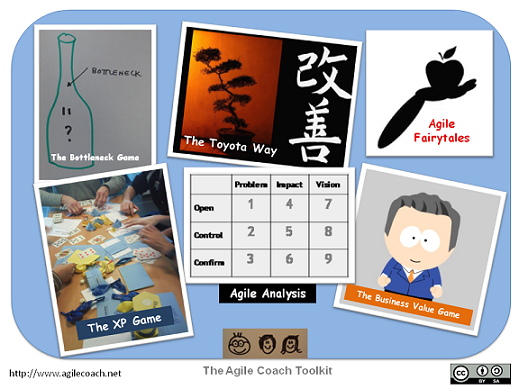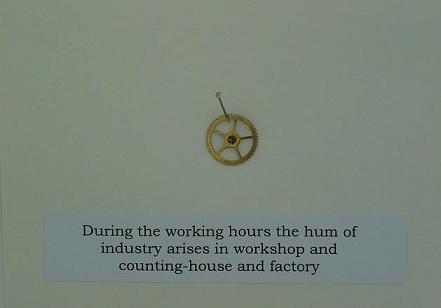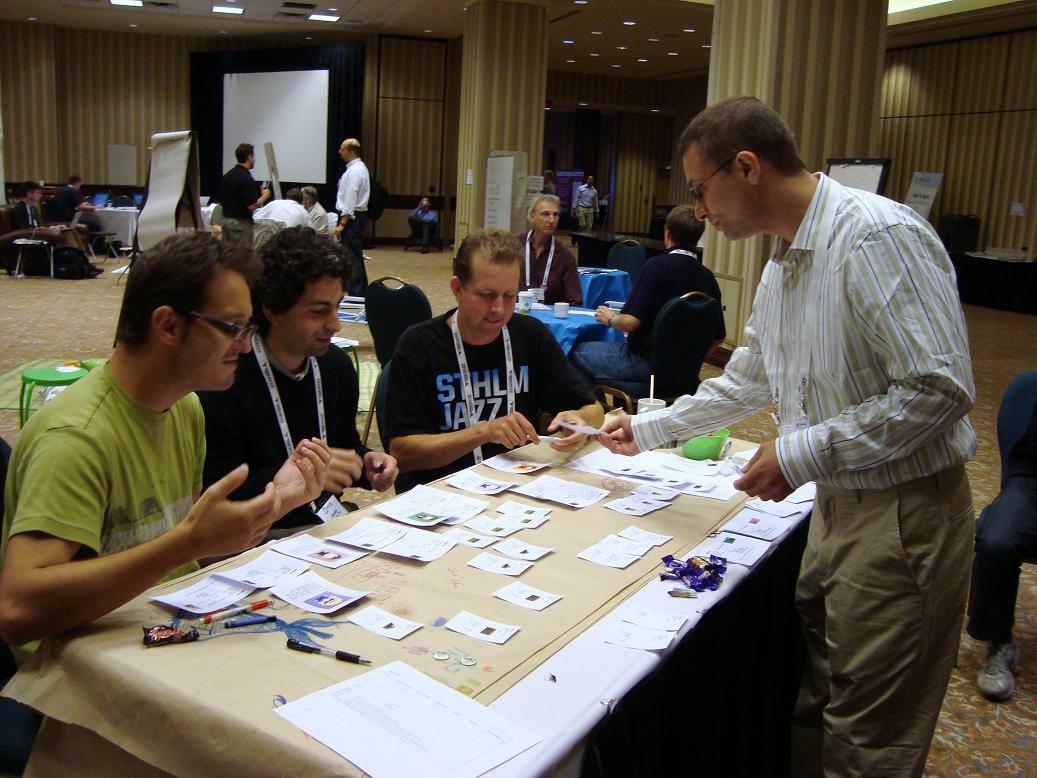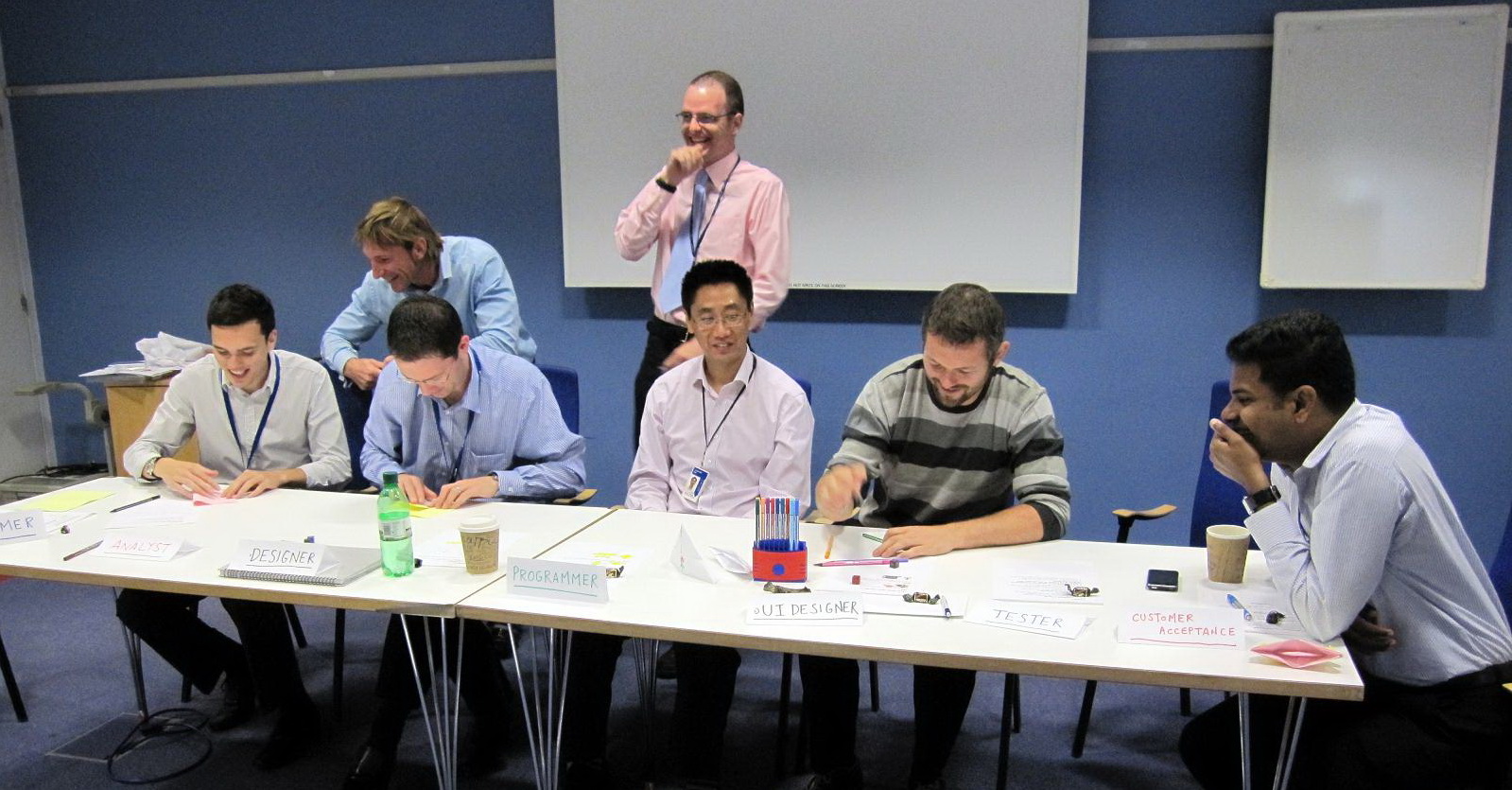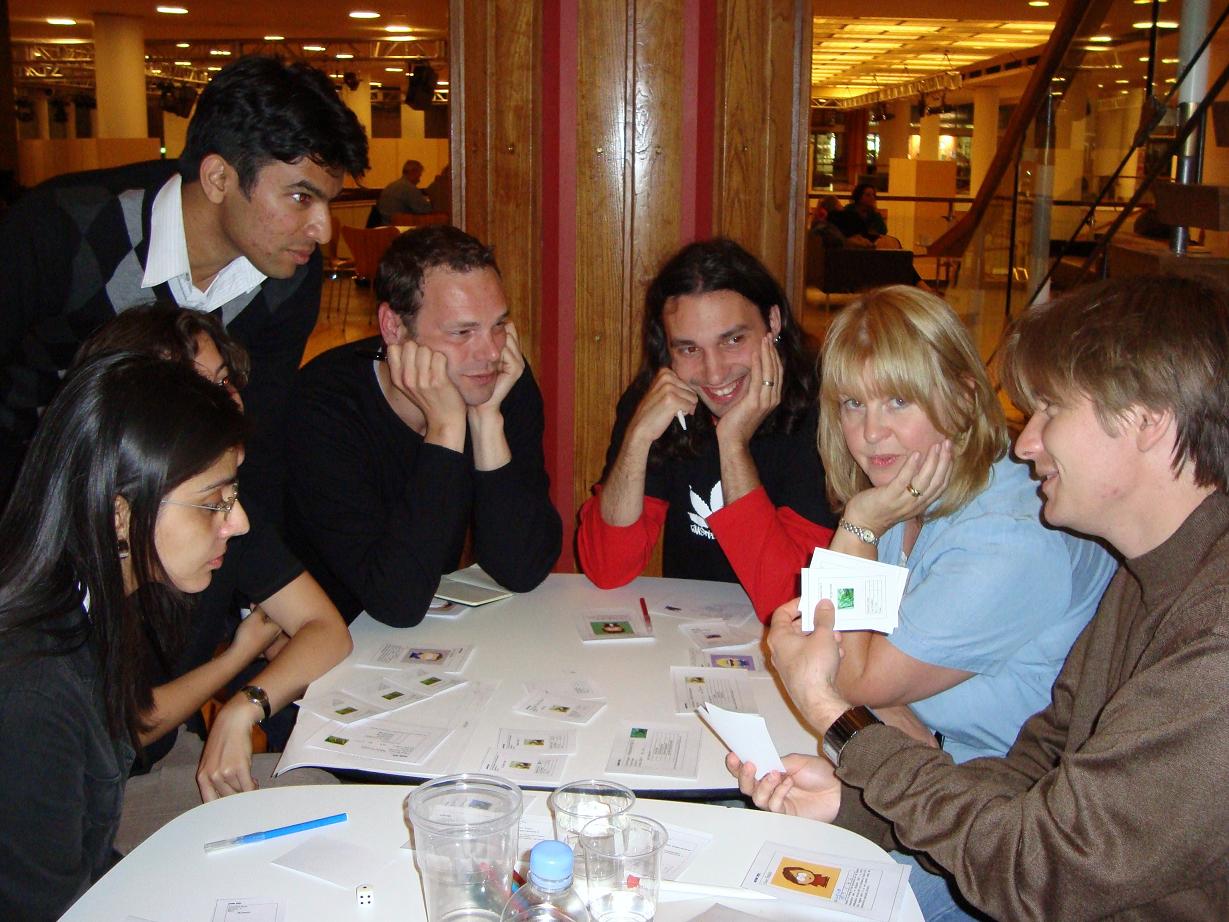The first Agile (XP) Value is Communication. Communication is probably one of the most talked about themes on Agile teams, yet it is probably one of the most difficult ones to realise. Jenni Dow and Ole Jepsen show us how in their session “Flirting” With Your Customers at Agile 2009.
Jenni and Ole liken developing rapport with a customer to two people flirting since successful relationships are based on Effective Communication through Mutual Understanding.
An 8 Step Guide to Flirting with Your Customer
1. Radar – Be switched on because every moment is a chance to connect with people.
You: I’m aware of my thoughts and how I’m feeling right now. I’m also aware of those around me.
2. Target – Identify who you need to connect with and why.
You: To deliver maximum value for my organisation, I need to gain support from senior management. Patrick’s a senior manager. I’ll go speak to him.
3. Move In – Show you’re interested in them by inquiring about their perspective on things.
You: Hi Patrick. Graham suggested I speak to you about how we currently deliver software. Do you have 5 minutes?
Customer: I’m on my way to another meeting.
You: How about I walk you there and we talk on the way?
Customer: OK!
You: What’s bothering you most about the software delivery process?
4. Back Off A Little – You’ve shown your interest in them, now give them a chance to reciprocate.
Customer: The way we do releases is a serious problem. They’re simply taking too long.
5. Open Up – Share more information.
Customer: Your concern mirrors my experience with the teams I’ve been coaching in your organisation. If we begin by applying some Agile practices to Release Management, we should be able to improve the process and reduce the overall time it takes per release.
6. Dance – Socialise!
Customer: Thanks for inviting me to this team lunch. It’s been great to hear firsthand from the team how they think Agile’s working out for us. What we really need is a repeatable process.
You: We’ll be learning more about process improvement based on the Theory of Constraints next Tuesday. We’ll be playing The Bottleneck Game, a production line simulation. You’re welcome to join us!
Customer: Mmm… I’m booked up already next Tuesday. Leave it with me and I’ll see what I can do.
7. Get Real – Work through a crisis together.
You: Patrick, I need your help.
Customer: What’s the problem?
You: The Release Management team thinks Agile is just a fad. They want to sit tight and wait for it to pass.
Customer: Thanks for letting me know. I’m seeing the Release Manager this afternoon. I’ll let him know that Agile is the way forward and we all have to do our bit to increase the value we deliver.
8. Enjoy – Enjoy the relationship and help it grow.
Just as 20% of the cost of a piece of software is incurred during development and the remaining 80% goes into maintenance, a similar distribution of effort applies to establishing and growing relationships.
Tips to Effective Communication and Meaningful Relationships
When applying the 8 steps, it’s important to remember to:
- Be open and receptive.
- Ask questions.
- Listen first.
- Find common points of interest/concern.
- Listen some more.
- Sense-check by playing back what you’ve heard (eg ‘If I understand correctly, the time it takes to do releases is a key concern for the organisation’).
- Apply the Agile Values (Communication, Simplicity, Feedback, Courage and Respect). Always.
What I Liked About the Session
Jenni and Ole are a great example of pair-presenting. I thoroughly enjoyed their session for three main reasons:
- It takes courage to tackle a tricky topic, especially that of human social interaction.
- Jenni and Ole created an environment where everyone could safely experiment with the steps.
- The steps were delivered in a good-natured way so as to make us laugh and help us remember them!
What Would Make the Session Perfect
- I would have liked to practice the 8 steps in triads (with two participants and one observer) in order to 1) gain a deeper understanding of the steps and 2) get feedback on my application of those steps.
- I would have liked to learn more about ways to grow a relationship – Step 8 – since relationships that endure are the ones that require time and effort.


